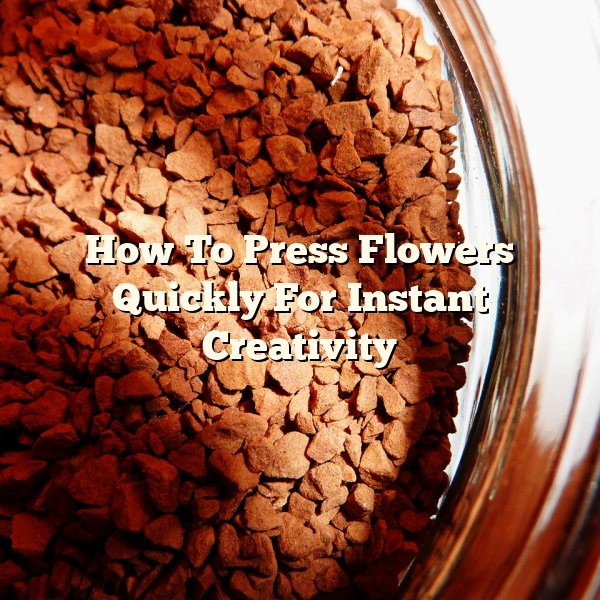A great way to liven up any room, any outfit or any day is to add flowers. Floral motifs add some life, color and romance. One of the easiest ways to get these patterns is to use actual blooms. If you know how to press flowers quickly, you can be creative in minutes.
The art of pressing blooms is an old one. Many generations of children have filled the pages of their dictionaries and bibles with leaves and blooms to later create greeting cards. A thick, heavy book is probably the easiest tool to use if you want to press any plant materials but you can also use a flower press. This is made of two blocks of wood that are fastened on top of one another with screws.
While using books to create the pressure you need is very effective, the plant sap can damage and stain the pages. Another drawback to both the book and the flower-press method is that it takes a couple of weeks before the plant materials you’re pressing are ready. They can also become discolored and look dead.
Fortunately there are ways of pressing plant matter by using modern technology. For instance, take a tile and place a piece of cardboard and a sheet of blotting paper on top. Place your flower in the position you want it and then cover it with another layer of paper and cardboard before placing another tile on top. Fasten the two tiles together with rubber bands and pop the whole thing in the microwave. Microwave it only for about ten seconds. Then check your flower and repeat the process until the flower is stiff and dry.
Even simpler is to use a clothes iron. Take two sheets of blotting paper, place your flower in between them and weigh it down with something heavy. This will flatten the flower. Now take a clothes iron that is set on the cool and dry setting and press it down onto the paper for a few seconds. Check your flower and repeat until it’s ready.
Using the microwave or the clothes iron has the advantage that it’s quick. You’ll have a pressed flower within minutes. A bonus is that the flower won’t lose its color and will look vibrant, almost as if you’ve just picked it.
Not all flowers are suitable for pressing. If they have a rounded shape, such as roses, or if they’re shaped like a cup, such as tulips, they won’t look good when they’re flattened. However, you can press the petals separately. If you prefer a whole flower, choose one that has a flat shape, such as a pansy or a daisy.
There are almost unlimited ways in which to use the leaves, petals and whole blooms that you’ve pressed. Think beyond bookmarks and greeting cards and let your imagination run wild. For instance, use them to decorate lampshades or other everyday objects such as your cellphone cover. Give boring pieces of cheap jewelry a new life with the floral treatment. Even Easter will never be the same once you’ve covered plain old eggshells in a way that resembles a summer garden.
Card makers and artists can easily learn how to press flowers quickly with the help of our user manuals. For FAQs, simply visit the related homepage at http://www.microfleur.com.

